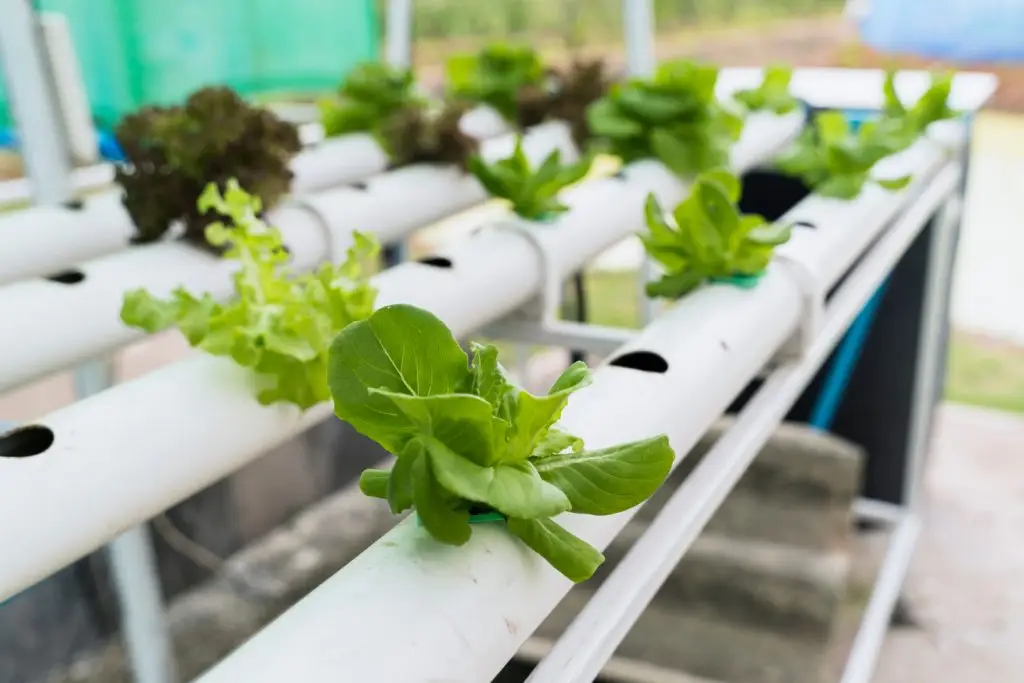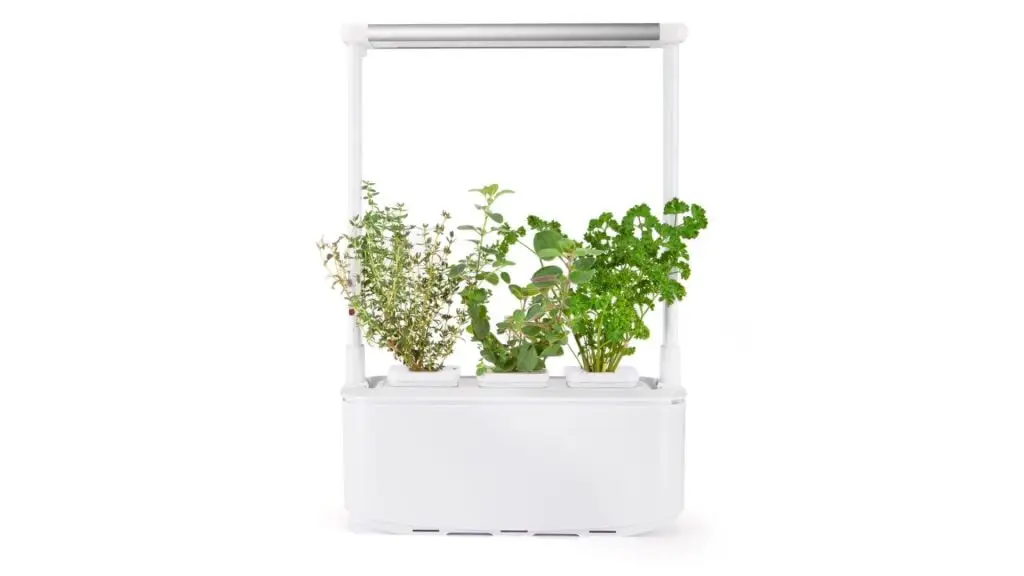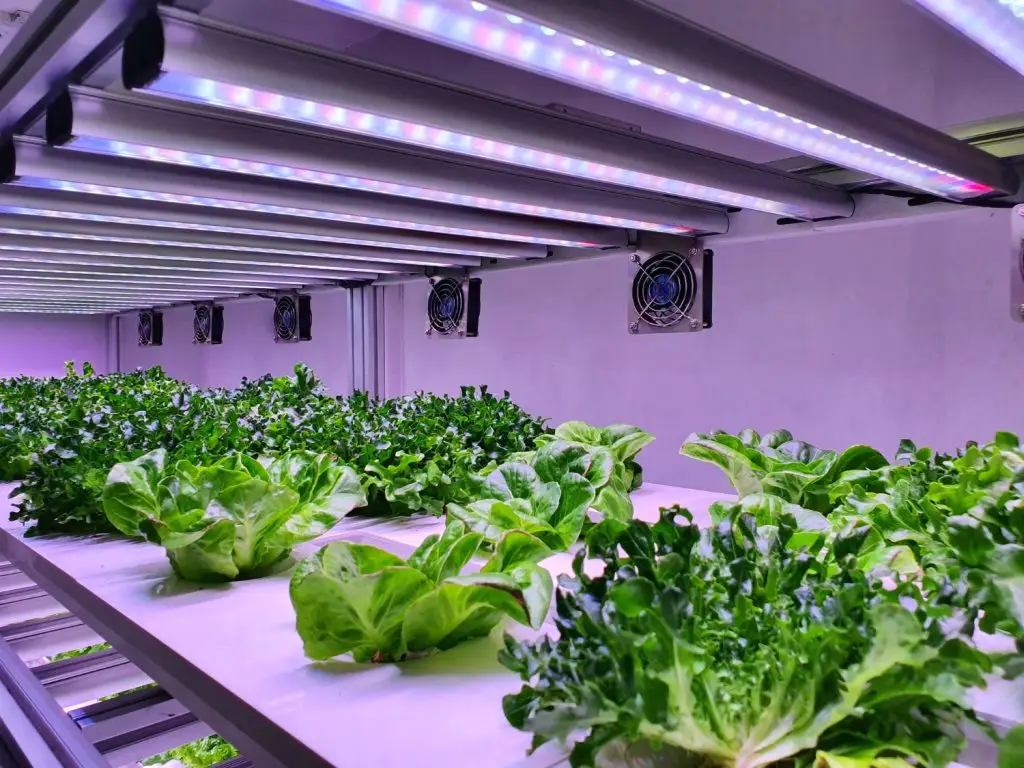In today’s rapidly evolving world of gardening, hydroponic systems have emerged as a revolutionary solution for growing plants without soil. By harnessing the power of water, nutrients, and advanced technology, hydroponics offers a range of benefits that are transforming home gardening experiences. From compact and efficient smart gardens to the versatile ebb and flow system, these innovative approaches are revolutionizing the way we cultivate plants within the comfort of our homes.
We delve into the fascinating world of hydroponic systems, exploring the different types available and highlighting the remarkable advantages they bring to home gardening enthusiasts. We will explore the wonders of hydroponic smart gardens, which seamlessly integrate technology for precise control over growing conditions.
Additionally, we will delve into the ebb and flow system, a popular hydroponic technique that optimizes nutrient delivery to plant roots. By the end, you will gain insights into how hydroponic systems can maximize space, conserve resources, and produce abundant, high-quality yields, all while nurturing a green oasis in the heart of your home.
Types Of Hydroponic Systems:
There are several types of hydroponic garden systems, each with its own unique design and method of delivering water and nutrients to plants. Here are some of the most commonly used hydroponic systems:
Deep Water Culture (DWC)
In a DWC system, plants are suspended in a nutrient solution with their roots submerged directly into the solution. Oxygen is provided to the roots through the use of air stones or diffusers.
Nutrient Film Technique (NFT)
NFT systems involve a continuous flow of a thin film of nutrient solution that flows over the plant roots, which are typically supported by a sloping trough or channel. The roots are in contact with the film of nutrient solution, allowing for absorption.
Drip System
Drip systems use a network of tubes or emitters to deliver a slow, steady drip of nutrient solution directly to the plant roots. The excess solution is typically collected and recycled.
Aeroponics
In aeroponic systems, plants are suspended in air, and their roots are misted or sprayed with a nutrient solution. The roots are exposed to the air, allowing for increased oxygen absorption.
Wick System
Wick systems are simple and passive. A wick, usually made of a porous material like cotton or felt, draws the nutrient solution from a reservoir and delivers it to the plant roots. The system relies on capillary action to provide water and nutrients to the plants.
Vertical Tower Systems
Vertical tower systems utilize vertical structures with multiple planting locations stacked on top of each other. Nutrient solution is pumped to the top of the tower and then trickles down through the different levels, providing water and nutrients to the plants.
Aquaponics
Aquaponics combines hydroponics with aquaculture, where fish or other aquatic animals are raised in a tank. The nutrient-rich water from the fish tank is circulated to the hydroponic grow beds, where the plants absorb the nutrients, helping to purify the water that is then returned to the fish tank.
Ebb and Flow (Flood and Drain) System
As mentioned earlier, ebb and flow systems intermittently flood the plant roots with a nutrient solution and then allow it to drain away. This cycle is repeated at regular intervals.
These are just a few examples of hydroponic garden systems, and there are variations and hybrid systems that combine different methods. Each system has its own advantages and may be more suitable for certain plants or specific growing conditions. The choice of system depends on factors such as available space, plant types, level of automation desired, and personal preferences.
The Ebb and Flow System

The ebb and flow system, also known as the flood and drain system, employs a captivating dance between nutrient solutions and plant roots. By periodically flooding the roots with a precisely balanced nutrient solution and then allowing it to drain away, this system offers an array of advantages that contribute to healthy plant growth.
The basic components of an ebb and flow hydroponic system include:
Grow Tray or Flood Table: This is a container or tray where the plants are placed. It is filled with a growing medium like perlite, clay pellets, or rockwool, which supports the plants and allows the roots to anchor.
Reservoir: The nutrient solution is stored in a reservoir, which is a separate container located below the grow tray. It holds the nutrient solution that will flood the grow tray.
Submersible Pump: A submersible pump is used to pump the nutrient solution from the reservoir into the grow tray. The pump is controlled by a timer or a sensor to regulate the flooding duration.
Drainage System: Once the flooding period is complete, the excess nutrient solution is drained back into the reservoir. This is typically achieved by gravity, using a drain pipe or tubing connected to the grow tray.
The operation of an ebb-and-flow hydroponic system follows a cyclical pattern:
Flood: The submersible pump is activated, and the nutrient solution is pumped from the reservoir into the grow tray. The solution fills the tray, submerging the plant roots. This flooding period usually lasts for a specific duration, typically a few minutes to a few hours, depending on the plant’s requirements.
Drain: After the flooding period, the pump is turned off, and the nutrient solution is allowed to drain back into the reservoir. Gravity pulls the excess solution from the grow tray through the drainage system. This drainage period allows the roots to access oxygen as the solution recedes.
Rest: Once the grow tray is drained, the system enters a resting phase where the plant roots are exposed to air. This period allows the roots to breathe and prevents waterlogging.
The cycle of flooding, draining, and resting is repeated at regular intervals throughout the day. The frequency and duration of the cycles depend on factors such as plant type, growth stage, environmental conditions, and nutrient requirements.
The ebb and flow hydroponic system is versatile and can be used for various types of plants. It provides a balance of moisture and oxygen to the plant roots, promoting healthy growth.
It also allows for easy nutrient solution management and can be automated using timers or sensors to ensure precise control over the growing conditions.
Hydroponic Indoor Kitchen Cultivator System
An indoor hydroponic cultivator garden system is a modern and automated system designed for growing plants without the use of soil. It combines hydroponics, which is a method of cultivating plants in water-based nutrient solutions, with smart technology to create an efficient and user-friendly gardening experience.
In a cultivator system, plants are typically grown in a controlled environment, such as an indoor setup or a greenhouse. The system provides the necessary nutrients, water, and light to the plants, eliminating the need for soil. Instead, the plant’s roots are submerged in or sprayed with a nutrient-rich solution that provides all the essential elements required for growth.
Hydroponic Cultivator Systems’ features can include:
Automated watering: The system can regulate the water supply to ensure plants receive the correct amount of moisture. Sensors or timers may be used to maintain proper hydration levels.
Nutrient management: Cultivator often have a system for automatically dosing and adjusting the nutrient solution. This ensures plants receive the right balance of nutrients throughout their growth stages.
Light control: Integrated LED lights provide the necessary spectrum and intensity for plant growth. Smart gardens may have adjustable lighting schedules to simulate day and night cycles, promoting healthy growth.
Climate control: Temperature, humidity, and ventilation can be monitored and adjusted to create an optimal growing environment for plants.
Monitoring and notifications: Sensors can track various parameters such as pH levels, water levels, and temperature. Users can receive real-time data and alerts via smartphone apps or other interfaces, allowing them to stay informed about their plants’ conditions.
Automated harvesting: Some advanced smart gardens may include mechanisms for automatically harvesting mature plants, making the process even more convenient for the user.
These systems are often designed for indoor gardening, allowing individuals to grow a variety of plants year-round, regardless of outdoor conditions. They are suitable for growing herbs, leafy greens, vegetables, and even some fruiting plants. It’s popular among urban gardeners, people with limited outdoor space, or those who want precise control over the growing conditions for their plants.
Benefits when used in a home environment
Space Efficiency: Designed to be compact and can be set up indoors, requiring minimal space. This makes them ideal for urban dwellers or individuals with limited outdoor areas. You can place them on a countertop, shelf, or any other suitable location within your home.
Year-Round Growing: With a cultivator system, you can grow plants throughout the year, regardless of the external climate or season. This allows you to have access to fresh herbs, leafy greens, and even some vegetables or fruiting plants regardless of the time of year.
Water Conservation: Hydroponic systems use significantly less water compared to traditional soil-based gardening. The closed-loop design of many hydroponic systems means that water is recirculated, reducing water waste. Additionally, water is efficiently delivered directly to the plant roots, minimizing evaporation and runoff.
Precise Control over Growing Conditions: Provide precise control over important environmental factors such as light, temperature, humidity, and nutrient levels. This level of control allows you to create optimal growing conditions for your plants, resulting in faster growth, higher yields, and potentially better-tasting produce.
Elimination of Weeds and Pests: Since hydroponic systems don’t use soil, they significantly reduce the risk of weeds and soil-borne pests. This means you can focus more on plant growth and health rather than dealing with common garden pests and diseases.
Improved Plant Growth and Health: Provide plants with direct access to water and nutrients in their preferred ratios. This results in accelerated growth rates and healthier plants. Additionally, the controlled environment reduces the risk of stressors such as extreme weather conditions or fluctuations in soil pH.
Convenience and Automation: Designed to be user-friendly and often include automation features. These may include automated watering and nutrient dosing systems, built-in timers and sensors, and smartphone connectivity for monitoring and control. Such features make the gardening process more convenient and accessible, even for individuals with limited gardening experience.
Educational and Engaging: It can be an excellent educational tool, especially for children, as they provide a hands-on learning experience about plant growth, biology, and sustainability. They can also be a source of relaxation and engagement for individuals who enjoy tending to plants.
While it requires an initial investment, its long-term benefits, such as reduced water usage, year-round productivity, and high-quality produce, can make them a worthwhile addition to a home.
Microgarden Smart Garden 3: A Simple and Convenient Solution for Year-Round Indoor Herb Growing

With the increasing interest in sustainable and self-sufficient lifestyles, gardening enthusiasts and food lovers have turned to hydroponics as a means of growing fresh herbs and microgreens indoors.
Among the various options available, the Microgarden Smart Garden stands out as an ideal choice for beginners and seasoned gardeners. Built on the efficient wick system, this smart garden seamlessly integrates technology to create an automated and hassle-free growing experience, ensuring that your plants receive the right amount of light, water, and nutrients at all times.
The Basics: The Microgarden Smart Garden comes equipped with a nutrient-rich water basin and an LED light on a programmable timer, supplying plants with the necessary illumination for optimal growth. This system is exceptionally user-friendly, making it an excellent option for anyone eager to delve into the world of hydroponics.
Automated Plant Care: One of the standout features of Microgarden’s Smart Garden is its ability to take care of your plants automatically. By regulating the light, water, and nutrient levels, the Smart Garden ensures that your herbs and microgreens thrive without constant manual attention. This hands-off approach allows you to enjoy the joy of gardening without the usual worries of upkeep.
Easy Setup and Immediate Growth: Upon purchasing the Microgarden Smart Garden, you receive three complimentary pre-seeded basil Plant Pods and three sachets of nutrient-rich fertilizer, enabling you to begin your indoor garden right away. The Plant Pods provide an optimal growth medium, fostering healthy development for your herbs from the start.
Convenience and Energy Efficiency: Designed with your convenience in mind, Microgarden’s Smart Garden boasts a water level indicator, signaling when the water level is low and needs replenishing. Moreover, the water basin has ample capacity to sustain your plants for up to three weeks, reducing the frequency of water refills.
To enhance plant growth further, the Smart Garden utilizes a professional-grade LED light that operates on a customizable timer. You have the option of choosing between a 16-hour light cycle with 8 hours of darkness or a 12-hour light cycle with 12 hours of darkness, aligning with your plant’s specific requirements. Additionally, the Smart Garden’s LED light consumes low wattage, making it an energy-efficient choice for eco-conscious gardeners.
Conclusion
Hydroponic systems, from Microgarden’s smart garden to the ebb and flow technique, have revolutionized home gardening by offering efficient, space-saving, and sustainable solutions for cultivating plants without soil. The ebb and flow system, with its rhythmic cycle of flooding and draining, presents a versatile approach that optimizes nutrient delivery and promotes healthy plant growth.
Its components, including the grow tray, reservoir, submersible pump, and drainage system, work harmoniously to create an environment where plants thrive.
Cultivator systems have opened up endless possibilities for home gardeners, allowing them to embark on a sustainable and rewarding gardening journey. Whether it’s the convenience of a hydroponic smart garden or the dynamic nature of the ebb and flow system, these methods offer a greener, more space-efficient, and more productive way to cultivate plants within the comfort of one’s home.
Embracing hydroponics means embracing innovation, sustainability, and the joy of nurturing thriving plants all year round. So, take the plunge into the world of hydroponics and witness the transformative power it brings to your home gardening experience.
